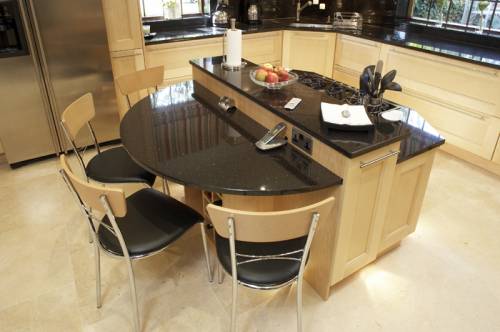Compare kitchen Hobs, also known as cooktops, come in various types, each with its own set of advantages and disadvantages. Here are some general pros and cons associated with different types of kitchen hobs:
Gas Hobs:
Pros:
-
-
- Quick and precise temperature control.
- The visible flame makes it easy to gauge heat levels.
- Suitable for a variety of cookware.
- Works during power outages.
-
Cons:
-
-
- Installation may require a gas line.
- Cleaning can be more involved than with some other types.
- Some models may be less energy-efficient compared to induction hobs.
-
Electric Coil Hobs:
Pros:
-
-
-
-
- Affordable and widely available.
- Compatible with most types of cookware.
- Relatively easy to clean.
-
-
-
Cons:
-
-
-
-
- Slower to heat up and cool down compared to other types.
- Less precise temperature control.
- Not as energy-efficient as induction hobs.
-
-
-
Induction Hobs:
Pros:
-
-
- Rapid heating and precise temperature control.
- Energy-efficient as heat is generated directly in the pan.
- Cool to the touch surface, reducing the risk of burns.
- Easy to clean.
-
Cons:
-
-
- Requires induction-compatible cookware.
- Typically more expensive than other types.
- May produce a humming sound during operation.
- Not all types of cookware are compatible.
-
Ceramic Hobs:
Pros:
-
-
- Smooth, easy-to-clean surface.
- Quick heating and cooling.
- Often has a modern, sleek appearance.
-
Cons:
-
-
- Takes some time to cool down after cooking.
- Not as energy-efficient as induction hobs.
- Vulnerable to scratches and damage from heavy or abrasive cookware.
-
Solid Plate Hobs:
Pros:
-
-
- Affordable and easy to install.
- Suitable for a variety of cookware.
- Simple design and operation.
-
Cons:
-
-
- Slower to heat up and cool down.
- Less precise temperature control.
- The surface can be challenging to clean.
-
Modular Hobs:
Pros:
-
-
- Allows customization by combining different cooking elements.
- Offers flexibility in design and layout.
- Can include a mix of gas, induction, and other elements.
-
Cons:
-
-
- May be more expensive than standalone hobs.
- Installation may be more complex.
-
When choosing a kitchen hob, consider your cooking preferences, budget, and the overall design of your kitchen. Each type has its own set of advantages and drawbacks, so it’s essential to find one that aligns with your specific needs and lifestyle.
Compare Kitchen Hobs
Ultimately, the best kitchen hob for you will depend on your specific needs and preferences. If you value precise control and energy efficiency, induction hobs may be a good choice. Gas hobs are excellent for those who prefer visible flames and quick temperature adjustments. Consider factors like installation requirements, maintenance, and the overall aesthetic appeal of the hob in the context of your kitchen space.


